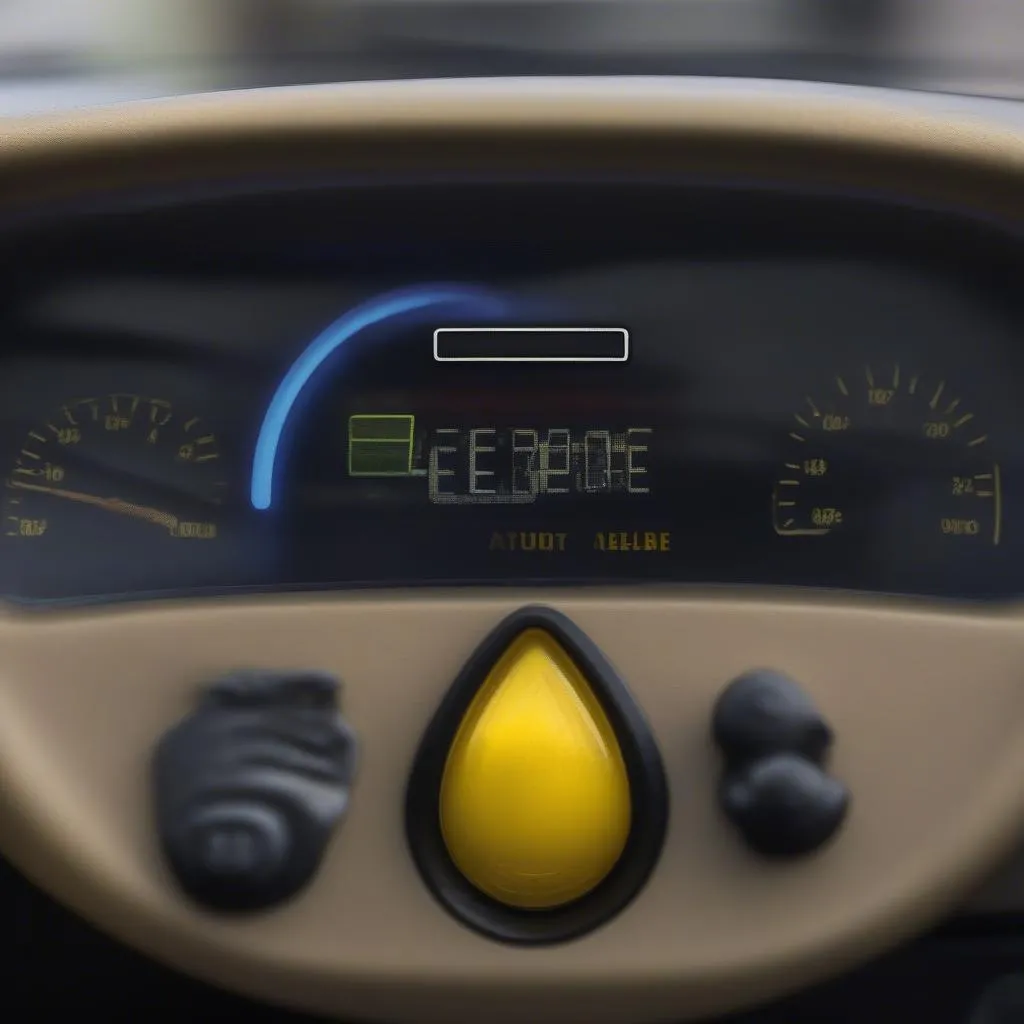The brake warning light on your 2009 Audi A6 is a crucial safety feature, designed to alert you to potential issues with your braking system. While it’s normal for the light to illuminate briefly when starting your car, a persistent brake warning light signals a problem requiring attention. Ignoring it could compromise your safety and lead to costly repairs.
This comprehensive guide will walk you through the common causes of a lit brake warning light on a 2009 Audi A6 and provide step-by-step instructions on how to diagnose and potentially resolve the issue.
Common Causes of a Brake Warning Light
Several factors can trigger the brake warning light in your 2009 Audi A6. Here are the most prevalent culprits:
-
Low Brake Fluid: One of the most common causes is low brake fluid, often due to worn brake pads or a leak in the brake system.
-
Worn Brake Pads: Brake pads have wear indicators that trigger the warning light as they near the end of their lifespan.
-
Faulty Brake Light Switch: A malfunctioning brake light switch might not only prevent your brake lights from functioning correctly but can also activate the brake warning light.
-
ABS Issue: Problems within the Anti-lock Braking System (ABS), such as a faulty sensor or control module, can illuminate the warning light.
-
Parking Brake Engaged: Sometimes, the simplest explanation is the most likely one. If the parking brake is even slightly engaged, it can trigger the warning light.
Diagnosing the Issue
Before attempting any repairs, it’s crucial to identify the root cause of the problem:
-
Check the Parking Brake: Ensure the parking brake is fully released.
-
Inspect Brake Fluid Level: Park your car on a level surface and locate the brake fluid reservoir under the hood. The reservoir will have a “MIN” and “MAX” marking. If the fluid level is below the “MIN” mark, add the appropriate brake fluid (refer to your owner’s manual).
-
Examine Brake Pads: Visually inspect your brake pads through the spaces between the wheel spokes. If the pads are worn thin, they will need replacing.
When to Seek Professional Help
While some issues, like low brake fluid, can be addressed relatively easily, others require specialized knowledge and equipment. If you encounter any of the following, it’s best to consult a qualified mechanic:
-
Brake Fluid Leak: A leak in your brake system is a serious safety concern and requires immediate professional attention.
-
Suspected ABS Issue: Diagnosing and repairing ABS problems often necessitates specialized diagnostic tools.
-
Electrical Issues: Problems with the brake light switch or other electrical components are best handled by a qualified auto electrician.
Remote Diagnostics and Software Solutions: A Modern Approach
In today’s digitally advanced world, remote diagnostics and software solutions offer innovative methods to diagnose and potentially fix car issues, including brake warning lights.
How it Works:
- Vehicle Data Access: Modern vehicles, like your 2009 Audi A6, are equipped with onboard computers that store valuable data about the car’s systems, including the braking system.
- Remote Connection: Using specialized software and a device that plugs into your car’s OBD-II port, qualified technicians can remotely access your vehicle’s data.
- Diagnostics and Solutions: By analyzing the data, technicians can pinpoint the root cause of the brake warning light. In some cases, they can even resolve the issue remotely by reprogramming or updating software within your car’s systems.
Benefits of Remote Solutions:
- Convenience: Get your car diagnosed from the comfort of your home or office.
- Faster Diagnosis: Remote diagnostics can often identify problems more quickly than traditional methods.
- Potential Cost Savings: In some instances, software-related issues can be resolved remotely, eliminating the need for expensive part replacements.
“Remote diagnostics and software solutions are revolutionizing the way we approach car repairs,” says automotive engineer and diagnostics expert, Sarah Williams. “These technologies allow us to provide quicker, more efficient, and often more cost-effective solutions for car owners.”
Conclusion
A glowing brake warning light on your 2009 Audi A6 shouldn’t be ignored. By understanding the common causes and following the diagnostic steps outlined in this guide, you can take the appropriate action to address the issue. Remember, your safety is paramount, and when in doubt, seeking assistance from a qualified mechanic is always the recommended course of action. Don’t hesitate to explore remote diagnostics and software solutions as a modern and potentially more convenient alternative for diagnosing and resolving car troubles.

